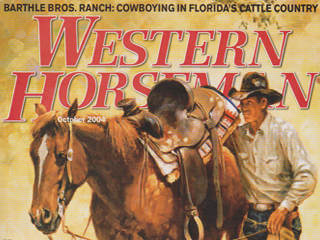Ranching in Florida’s Cattle Country
A Florida ranch family blends enviromental diversity with time-honored traditions.
Rays of sunshine slice through the early-morning coastal fog and a canopy of lush, emerald foliage. A white-sand path cuts through the tropical terrain to a peaceful ranch house shaded by a panorama of palm, palmetto, cypress and oak trees. Although the sun’s barely up, Larry Barthle is headed out the front door to jumpstart the day’s work.
There’s always plenty to do on the Barthle Brothers Ranch, and this particular spring day is exceptionally hectic. In addition to recordkeeping, checking cows, monitoring mineral levels, fixing fence, rotating pastures and other chores, Larry is also hosting a media tour of his four-generation family ranch and expecting a video-marketing crew to come shoot footage of calves for an upcoming auction.
On another section of the ranch, Larry’s brother, Randy putters along the broodmare-pasture fence line in his pickup, looking for newborn foals. With one hand on the steering wheel, and the other holding a cell phone, he discusses ranch business with other family members. He parks beside the corral, where niece Lauren introduces a day-rider who’d like to buy a couple of ranch-horse prospects.
With three generations of the Barthle family living on or near the 8.000 acre horse and cattle ranch, the operation flourishes from family teamwork. Brother Mark, a barge-company worker in Tampa, Florida, helps handle the conservation side of the business with the entire family, while sister Jan Dillard manages the ranch’s bookkeeping and ensures that the venture stays financially afloat. Brother Steve is the mechanical genius, and another sister, Kathy Paige, is an elementary school teacher in Clewiston, Florida, who grows sugar cane with her husband, Steve. At the helm of the ranch is the Barthle matriarch, Jeanette Barthle Sutton. Although each family member has a specialty, they all stand united to manage all aspects of this enviromentally conscious, multifaceted entity.
